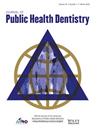Long-Term Impact of Childhood Dental Attendance on Perceived Adult Oral Health: The British Cohort Study
Abstract
Objective
To evaluate the effect of childhood dental attendance pattern on self-rated oral health in middle adulthood among the British population.
Methods
Data from the 1970 British Cohort Study involving participants born in England, Scotland, and Wales were used. Self-rated oral health was assessed at age 46. Childhood dental attendance patterns, derived from follow-up surveys at ages 5, 10, and 16, were classified as ‘always’, ‘sometimes’, or ‘never’ regular. Logistic regression was performed to estimate the effect of childhood dental attendance on adult oral health. Subgroup analyses by education level and oral hygiene practices examined potential variations across these factors.
Results
This study analyzed data from 4699 participants. An association was found between childhood dental attendance pattern and self-rated oral health in middle adulthood. The odds of reporting poor oral health were higher among those with ‘sometimes’ and ‘never’ regular dental attendance patterns than ‘always’ regular attenders. However, this association became insignificant after adjusting for covariates. Subgroup analyses revealed that ‘sometimes’ and ‘never’ regular attendance patterns were associated with higher odds of reporting poor oral health among participants who brushed less than twice daily and those with lower parental academic qualifications.
Conclusion
This study suggests that childhood dental attendance is associated with perceived adult oral health, though this relationship diminished after adjusting for covariates. However, the association persisted among those who brushed less than twice daily and had lower parental academic qualifications. It underscores the importance of both demographic factors and health-related behaviors in determining long-term oral health outcomes.


 求助内容:
求助内容: 应助结果提醒方式:
应助结果提醒方式:


